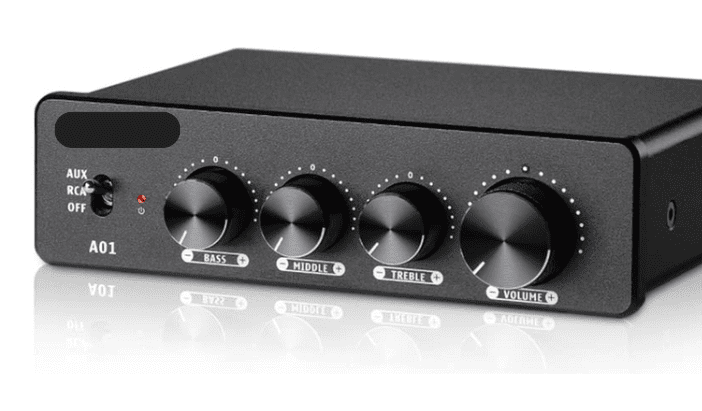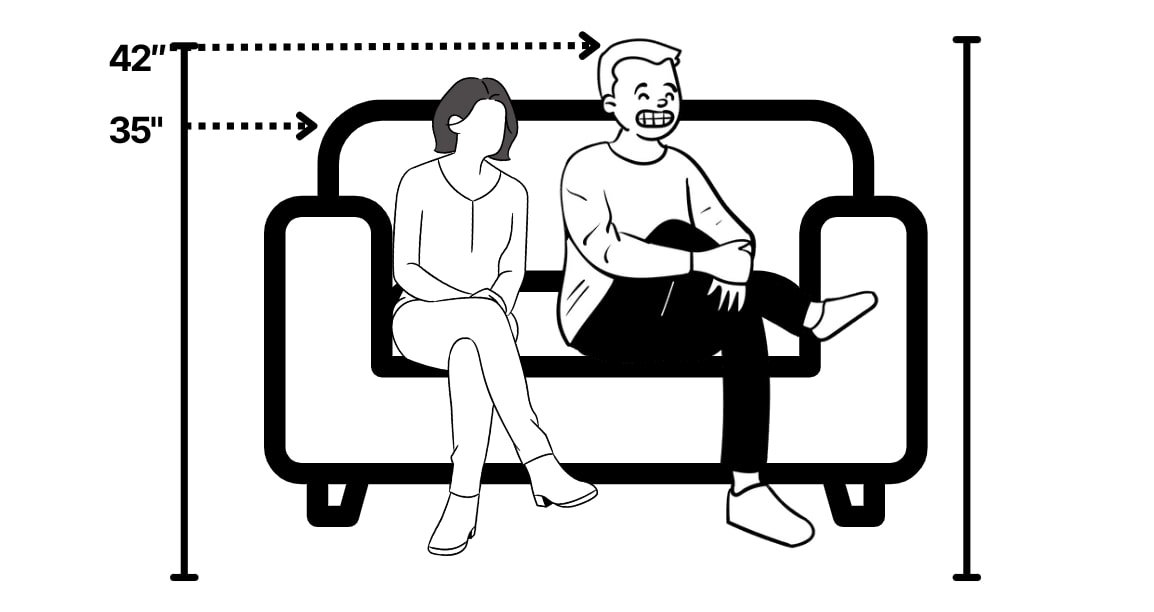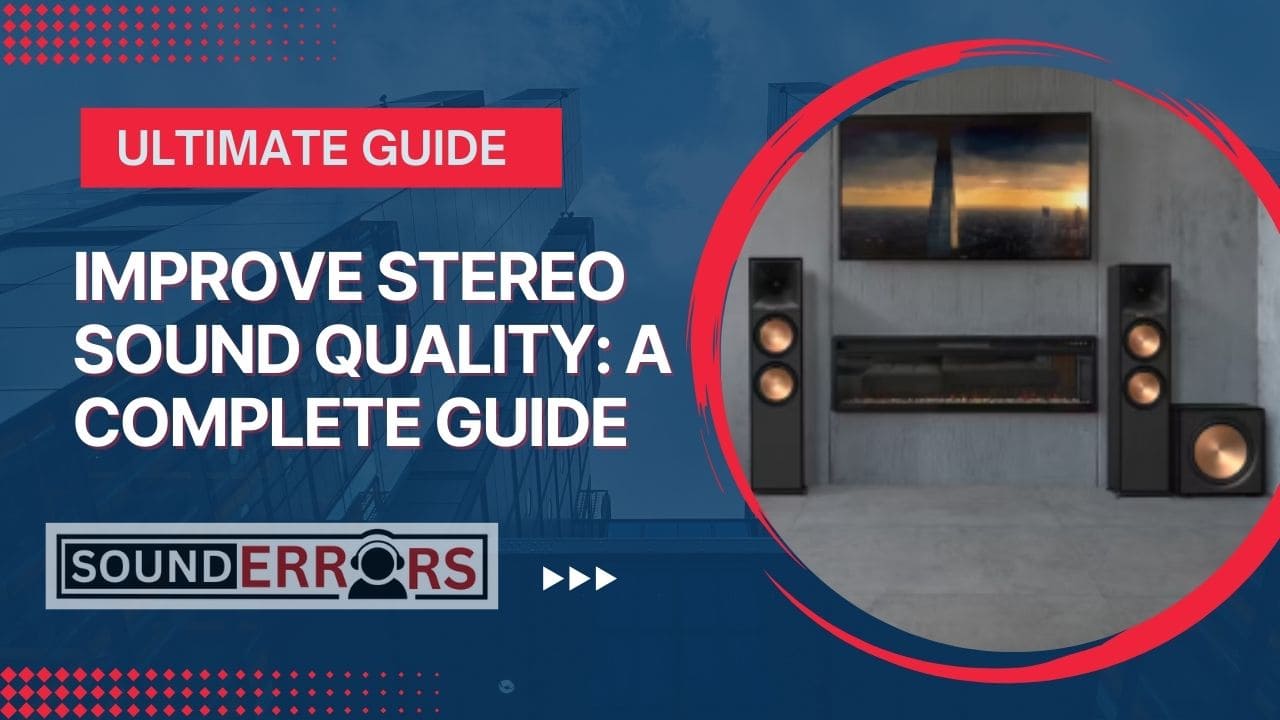This Post may contain affiliate links, when you purchase through links on our site, we may earn an affiliate commission at no extra cost to you. Here’s how it works.
Good sound quality can make your home entertainment more realistic. If you’re asking, “How can I make my stereo sound better?” or “How do I make my stereo louder?”, you’re not alone!
Table of Contents
ToggleWith the right approach, it’s possible to significantly improve the audio experience. From basic stereo setup to advanced techniques to improve your stereo sound quality.
Why Stereo Sound Quality Matters
Sound quality plays a crucial role whether you’re listening to your favorite tracks, watching a movie, or enjoying a podcast. Lower sound quality can make sounds unclear, muddy, or distorted.
Improving stereo sound quality enhances clarity, balance, and overall enjoyment. Before taking any further steps, ensure you have standard speakers and amplifiers for experiments.
Basic Ways to Improve Stereo Sound
If you’re looking for simple ways to improve the sound quality of your stereo, you have to start fixing or enhancing these basic things:
Adjusting Your Stereo Settings:
Your stereo sound system likely has several built-in settings, including bass, treble, and balance. By fine-tuning these few controls, you can enhance your system’s sound:
- Bass: Adjusting the bass can give your music more depth, but too much bass can make it sound muffled. Try to find a balanced setting that emphasizes the music.
- Treble: Adjust the treble to add brightness and clarity, especially in the higher frequencies. Be cautious not to boost the treble too much.
- Balance: Ensure that both left and right channels are balanced, and the sound is not skewed toward one side.

Speaker Placement Tips:
Where you place your speakers can have a huge impact on sound quality. Here I’m telling you the exact position of those speakers:
- Position Speakers at Ear Level: If you’re listening from a seated position, ensure the speakers are at ear level.

- Avoid Walls: Placing speakers too close to walls can cause the sound to bounce back and create unwanted reflections. So, place them at least 6–12 inches away from the wall.
- Create an Equilateral Triangle: The ideal placement is where the two speakers and your listening position form an equilateral triangle. In short, both speakers will be focused on the listening area.
Using Quality Audio Sources:
Ensure you’re playing high-quality music files or streaming from a high-fidelity service. Poor quality audio files (e.g., 128 kbps MP3s) will always sound inferior, no matter how good your stereo system is.
More than 256kbps can be enough, but I prefer 320kbps for better audio quality. But now audio files and their quality are far from your thoughts. Just explore and enjoy flawlessly.
Advanced Tips for Enhancing Stereo Sound:
After rectifying regular mistakes, here are some advanced tips to improve your stereo experience. Not every setting and the extra thing is for you, you have to prioritize personal preferences. This suggestion may cost you, so ensure you’ve enough budget for it.
Upgrading Stereo Components:
- Speakers: One of the most impactful upgrades you can make is swapping older speakers for new ones with the latest technology. Which can provide a clearer, more detailed sound.
- Amplifiers: If your stereo system is struggling to produce clear sound at higher volumes, adding a dedicated amplifier can boost the output without distortion.
- Subwoofers: Adding a subwoofer can improve bass response, giving you fuller and deeper low-end sounds.
Acoustic Treatment for Better Sound:
It does not matter how good is your stereo sound system, bad acoustics in your room can significantly downgrade stereo sound quality. Let’s see how you can improve your room’s Acoustics issue.
- Soundproofing: This reduces unwanted external noise, making the sound clearer.
- Absorber panels: Using items like foam panels can help reduce echoes and unwanted reflections.

- Bass Traps: These can help control low-frequency sounds and prevent the bass from boomy.
Using Equalizers and Sound Processors:
If your stereo or audio system has an equalizer (EQ), you can use it for fine-tuning.
- Boost mid-range frequencies for clearer vocals.
- If the sound is too sharp, reduce harsh treble frequencies.
- Use a subwoofer’s low-pass filter.
- If you have an advanced amplifier with presets, you can experiment with that.
A Budget Setup for Great Stereo Sound
- Speakers: Edifier R1700BT, Denon SC-M41 or Mackie CR3-X ($100-$200)
- DAC/Amp Combo: FiiO K5 Pro or Topping DX3 Pro ($100-$150)
- Cables: Budget-friendly decent 3.5mm RCA cable for connecting to your source.
- Streaming: Spotify Premium, Apple Music, or Tidal for high-quality audio sources.
- Power Sources: Use any standard stabilizer for power sources ($50-$100).
Improving your stereo setup doesn’t always mean spending a fortune—small tweaks, thoughtful upgrades, and smart choices can lead to significant improvements without breaking your budget.
How to Make Your Stereo Louder
If you’re wondering how to make your stereo louder without sacrificing sound quality, here are some tips to do so safely:
Boosting Output Without Distortion:
The key to making your stereo louder is finding the right balance between volume and sound quality. You may have any mistakes, but here is how you can do it:
- Proper Gain Staging: Ensure the signal levels are balanced throughout your system. Overloading the input or output at any point can cause distortion.
- Use of Amplifiers: Amplifiers can help increase the overall power of the system, use them carefully to boost sound.
Proper Volume Management:
- Volume Control: Start with moderate volume levels and adjust gradually. If your stereo components aren’t built to handle high power, upgrade it.
- Speaker Efficiency: Consider using more efficient speakers that require less power to produce louder sounds.
The Role of Amplifiers:
Amplifiers are known for handling audio input and output with audio quality enhancement capability. A good amplifier provides clean power, boosting the signal to your speakers.
It doesn’t just make the stereo louder, it also improves clarity at high volumes. Investing in a higher-quality amplifier is a one-stop solution if you have a standard sound system.
Does a New Car Stereo Improve Sound?
If you’re driving an older vehicle with factory-installed speakers, upgrading your car stereo can make a difference. If you’re looking to upgrade your sound system, here are a few things you have to know:
What to Consider Before Upgrading Your Car Stereo
- Speaker Quality: Upgrading both the speakers and the head unit (the car stereo) can lead to a major improvement in sound.
- Power Handling: A new stereo system may come with more powerful amplifiers, providing better volume and clarity.
Comparing Factory vs. Aftermarket Stereos
- Sound Quality: Aftermarket car stereos are designed with higher-end components and more customizable settings.
- Customization: Aftermarket systems allow more flexibility in terms of sound adjustment, allowing you to fine-tune bass, treble, and other audio parameters.
- Setup Cost: Aftermarket stereo system may cost you a couple of hundres to thousands of dollars for installation. It depends on your requirements and car model.
Conclusion
Improving stereo sound quality doesn’t have to be difficult or expensive, but if you have older setup it may take a few hundred of dollars. By adjusting settings, optimizing speaker placement, and upgrading key components, you can significantly enhance your listening experience.
For those seeking higher volume and clearer sound, consider adding amplifiers or subwoofers. You may experience that after a few levels sound is not clear compared to mid-level. If you’re looking for clear and louder sound from lower-quality speakers is not possible.
